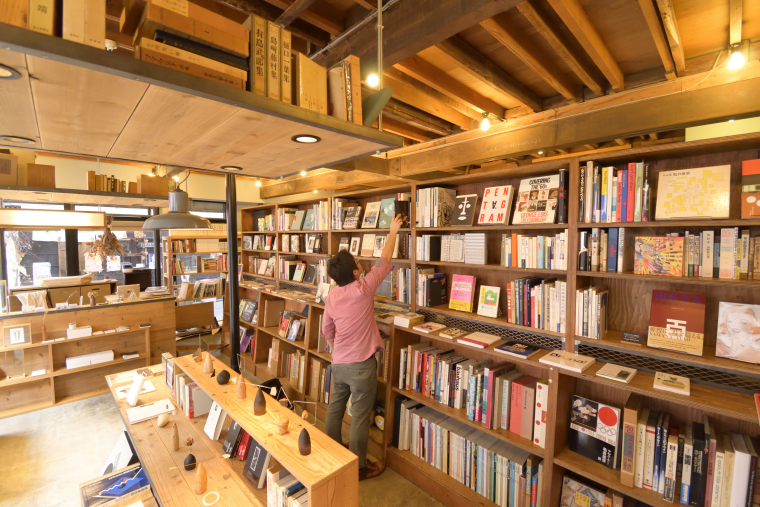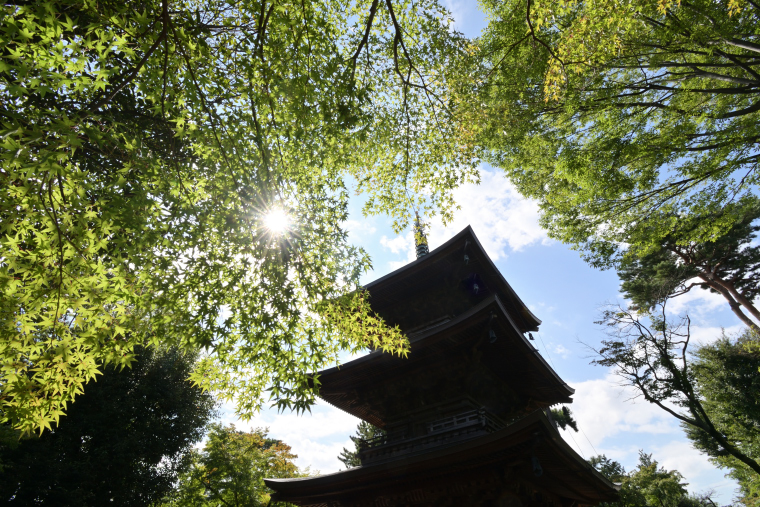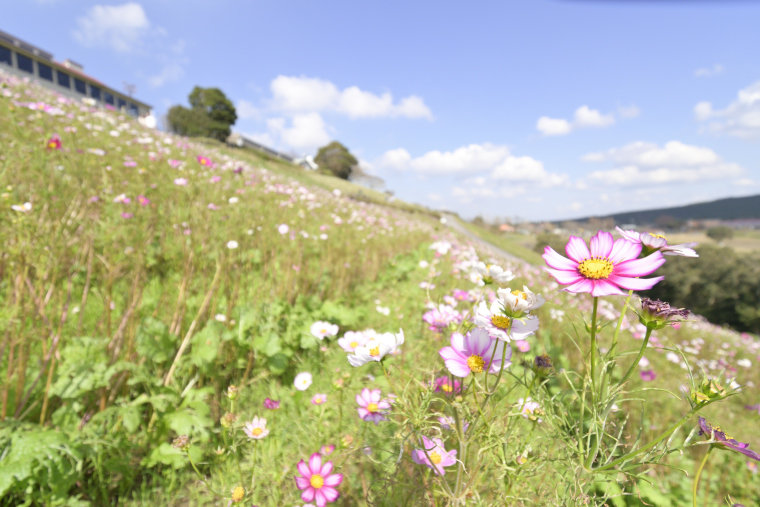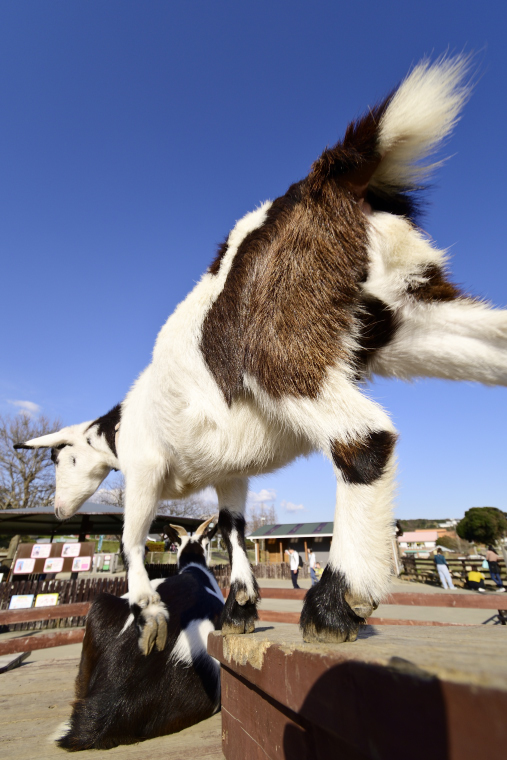Taking Snapshots with a Wide-Angle Zoom Lens
Photos/Text: Yuki Mizota
Making the Most of Wide Angles
Wide-angle lenses capture more of a scene than standard lenses. Although the
wider angles that capture wider areas make them perfect for photos that capture an
expanse, you’ll also find that they somehow manage simultaneously to capture
a bunch of things you’d rather not have in the shot. One key to using wide-angle
lenses effectively is to pay attention to the edges of the frame when looking through
the viewfinder.
A wide-angle lens can be used to add breadth to a small space when you are shooting indoors or unable to back away from your subject. Including a corner, as in this bookstore, further adds a sense of depth. Here I held the camera over my head for a high-angle shot that included the suspended shelf (Sample Photo 1).
Pausing to look at the foliage close above me, I was struck by the beauty of the translucent green curtain formed by the leafy canopy. When photographed from an angle where the leaves on either side overlap slightly to form a tunnel, the leaves seem larger and the temple smaller than their actual size. Wide angles emphasize the effects of perspective, making nearby objects seem larger and more distant ones smaller. Their deep depth of field gives rise to sharp photos in which the entire frame, from the foreground to the background, is in focus, an effect known as “pan focus” and opposite to that produced by telephoto lenses. The camera can be angled up to add impact or a feeling of solemnity (Sample Photo 2).
By choosing a low f/-number (large aperture) and placing your subject at close to the minimum focus distance (aka “minimum object distance”) so that it fills the frame, you can blur the background and further enhance the effects of perspective. Here cosmos stand in the middle of a broad sea of flowers blurred so that you don’t notice the gaps and wilted blossoms. After getting so close that I had to be careful not to photograph my own shadow, I first selected an angle where the main subject appeared to be striving vigorously for the heavens and then positioned the field in the frame and chose the amount of sky that would appear in the shot (Sample Photo 3).
These photos capture moments when a goat looked into or crossed in front of the lens.
It is characteristic of wide-angle lenses that the closer the subject, the more it
appears distorted, and when photographing the faces of people and animals you can
take advantage of this for fun, unique effects (Sample Photo 4). You can also use
it to add vigor and dynamism to shots of moving objects (Sample Photo 5).
Rather than using wide-angle lenses simply to capture wider angles, with enough
skill you can also take advantage of their perspective-distorting effects for dynamic,
compelling shots. In both portrait and landscape orientations, a slight change of
angle can produce large changes in photographic expression. I find it interesting
how one’s powers of expression grow as one photographs more and more scenes.
Note: Visitors to Mother Farm are prohibited from picking or otherwise
damaging the plants. Visitors are permitted to enter the hillside cosmos field for
a closer view, but please show respect for others when taking photographs.
Tips: Taking Snapshots with
a Standard Prime Lens
Tips: Taking Snapshots of
Street Scenes with a Standard Prime Lens
Tips: 35 mm/Wide-Angle
Zoom Lenses—Flowers and Farmyards
Tips: 35 mm/Wide-Angle
Zoom Lenses—Street Scenes
Thanks to: nostos books/Gōtokuji/Mother Farm






